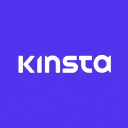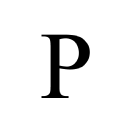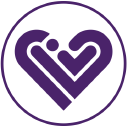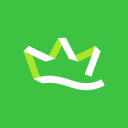
How I Started A $5K/Month Business Selling Eco-conscious Lifestyle Clothing
Hello! Who are you and what business did you start?
My name is Brandon Dendas. I'm the co-founder of IndieGetup. IndieGetup is a fashion discovery platform that allows people to shop and discover clothing brands & products by a curated list of lifestyle and location-based categories.
The mission at IndieGetup is to help to emerging, consciously-driven, and local apparel brands gain exposure and generate sales through creative digital strategies. In return, we allow consumers to shop for alternative clothing brands that better align with their lifestyle and that contribute to their local economy.
We have recently relaunched the platform as IndieGetup 2.0, which has thoughtfully designed brand profile pages, along with new features that include product pages that link directly to Amazon, style collections, as well as detailed product reviews.
We are now generating $5,000/mo. in revenue through sponsored content, giveaway promotions, B2C & B2B affiliate sales.

What's your backstory and how did you come up with the idea?
As many innovations begin, IndieGetup was created as a by-product of a creative pursuit.
I’ve always aspired to start my own company, instinctively I assume because I come from a family of entrepreneurs. Throughout college, I always looked for positions and internships at smaller companies, where I would have direct exposure to the owner. These companies gave me the opportunity to understand the full interworking of a business.

Throughout that time, I worked for a few digital marketing companies, held various social media marketing positions, and even attempted started a social media company with a few classmates. After graduation, I went to work for a startup digital marketing SaaS company, NorthPage.
Though I only ended up working there for only a year and a few months, my time spent was imperative in hindsight. I was pushed to the limit, working 70+ hour weeks, and delivering high-level, data-driven presentations alongside a badass team, to clients such as IBM, State Farm, Este Lauder, and other Fortune 500 companies across a wide array of industries.
In that short span, I learned a lot about best practices as it relates to the customer digital journey, inner-workings of business from company culture, processes, sales, and more. More importantly, I learned a lot about myself. Simply put, I know I loved marketing, and wanted to work for myself.
After leaving that company, I went to work for my father’s insurance agency, as their marketing specialist. This was a new role for the company, so there was no training or direction. With my digital marketing knowledge from school and more specifically through the saas company, I recreated their website and completely revamped their digital foundation.
During this time, I worked independently, so, during work hours, I would listen to a fair share of podcasts, specifically Chase Jarvis Live. One interview stuck out the most, his conversation with Gary Vaynerchuck. From there, I was opened to the world of the side-hustle.

In my spare time, I would come up with ideas for side-hustle businesses. This was in collaboration with my longtime friend and now co-founder, Max Mangs. Through our conversations, we ultimately decided to start a clothing brand.
In our information age, Ideas are obsolete. Execution is paramount. Everyone has the next big idea, but not everyone is willing to sacrifice to get where they want to be.
In our pursuit of gathering inspiration, we searched diligently on both Google and social media and compiled a list of brands we aspired to become in a Google Sheet. Through this discovery process, we found ourselves looking for a directory or some sort of platform that listed small/grassroots brands that aligned with our criteria for clothing brands we wanted to create. We quite simply could not find one. This is when I presented the idea to Max. We spent the last few weeks compiling a list of over 100+ brands, “why don’t we just create a website that curates all of these brands in a centralized location so people can discover new, innovative, emerging clothing brands according to their lifestyle, or location?” From there we scrapped the idea for a clothing brand and started to conceptualize what was to come, IndieGetup.
Take us through the process of designing, prototyping, and manufacturing your first product.
As I mentioned, my skill set is within digital marketing, not in web design or web development, so launching a website was uncharted territory. I had a good vision of what I wanted to create and had an arsenal of digital marketing best practices to make a kickass optimized platform, but I had no idea how to buy a web domain. Furthermore, I had experience creating content on WordPress websites, but I hadn’t had the slightest clue how to create one. So as millions of others do, I took it to YouTube and searched for a query like - “how to create a WordPress website?”
After work hours, and during slow periods throughout the day, (sorry dad!), I learned how to build a WordPress site. I bought a theme from themeforest.net and customized it through Visual Composer.
The theme, hosting, and other design elements cost me a grand total of $289.
Describe the process of launching the business.
As this is my first official venture, I really didn’t have a launch strategy or any execution plan, everything was done through trial and error.
The only goal I set for myself was to feature at least 2 brands on IndieGetup a week. Max and I followed the startup motto “act now, apologize later.” We would do brand write-ups gathering content, images, videos from social media accounts, about us pages, articles, and podcasts without asking the brand’s permission.
We would then use Hunter.io to find personal contacts at each brand, and send welcome emails introducing who was and welcoming them to the platform.
Brands we’re typically flattered with their feature and would share across their social channels. If they wanted anything modified, we’d customize their content however they saw fit.
Through this model, featuring brands for free, we were able to create a proof-of-concept to start selling brand features on the site.
This worked out for us later down the road when we started running giveaways. We offered free exposure for these brands, making them more inclined to work with us for later campaigns (Jab, Jab, Jab, Right-Hook)
The first few months were slow. We saw little to no traffic. At best, 100 - 200 page views per month.
Understanding how organic traffic works, we stayed the course and dialed down on our content strategy, executed our social media foundation, and email marketing.
Our overhead at the time was very light - web hosting, Canva, IG bots, and Mailchimp, brought us to a total of $120/mo, which both Max and I paid out of pocket for the first 3 months.
Video of a marketing agency tearing our old website apart (skip to 13:00)
Since launch, what has worked to attract and retain customers?
The way we initially drove traffic to the site was through social media, specifically Instagram, Facebook, Twitter, and organic search. We would make a daily post highlighting specific brands and a summary level backstory of the company.
We stayed away from any paid ads at the beginning because we quite frankly didn’t have the budget for it. I was also at the frontend of our marketing efforts and didn’t have much experience in paid ads, so we just double-down on what we need, organic.
We expanded our followers through hand-to-hand combat. Max and I would spend an hour or so each day following and unfollowing accounts, commenting on posts, and engaging in FB communities and sub-Reddits.
We would also utilize Instagram bots. We cycled through about 7-8 different services. Sticking with them until they were found by IG and banned from the platform.
Once we started to receive some traffic (500 - 1000 page views per month) our sales process began. Below is a screenshot of our initial pricing structure. We featured brands on a fixed pay-per-feature basis to test the demand for our service.

This wasn’t a sustainable model as it was a fixed-one time cost, but it gave me time to test and develop our sales process.
We started reaching out to brands using Instagram as our primary source for prospecting. A large majority of the brands we work with have a small team, so more times than not we would be speaking directly with the founders, which made it easy to schedule a call.
My business partner, Max would handle all prospecting and I would take the sales calls.
A large majority of the brands we work with have a small team, so more times than not we would be speaking directly with the founders, which made it easy to schedule a call.
We have since moved away from a flat-fee feature, and now have a yearly retainer model, as well as an affiliate commission agreement to be featured on the platform.
How are you doing today and what does the future look like?
Today, IndieGetup is doing great! We recently relaunched the platform: IndieGetup 2.0. The newly polished site now has thoughtfully designed brand profile pages, along with new features that include product pages that link directly to Amazon, style collections, as well as product reviews that showcase detailed reviews of the best products in clothing and gear.
We have 4 main sources of revenue:
- We have a yearly retainer model for brands to be featured on the platform.
- B2C affiliate sales powered by Avantlink, Refersion, Share-A-Sale, and Amazon.
- B2B affiliate sales when we onboarding company using these affiliate platform.
- Promotional giveaway.
Through starting the business, have you learned anything particularly helpful or advantageous?
BIG MISTAKE we made over the summer was hiring a web design/dev. the agency on a per-project basis. DO NOT do this! We ended up cutting ties with them because they undersold the work that needed to be done. For big projects like that, hire on a per hour basis.
Think about processes and systems when implementing new strategies. I’m still horrible at this. When I come up with an idea, I immediately want to execute it. If you want to run a business you need to think systemically. How can you create a process where this aspect of your business can run without you being there.
What platform/tools do you use for your business?
- WordPress for our CMS.
- Kinsta for hosting.
- MailChimp for email marketing.
- Mailbutler for email campaigns.
- Instavast for automated DMs.
- Quickbooks for accounting.
- PayPal for payments.
- KingSumo for giveaways.
- Pixieset for sharing images with influencers/brands.
- Trello for content schedule / CRM.
- Canva for custom graphics.
- G Suite for sharing files.
What have been the most influential books, podcasts, or other resources?
- The 4-Hour Workweek - Outsourcing & automation is your way to financial freedom.
- I Will Teach You To Be Rich - Automation is the key to investing & saving. Set it and forget it.
- Born For This - Having the perfect profession consists of these 3 elements: money, joy, and flow. Chirs will explain.
- The Lean Startup - Split test to validate your ideas. Try to get people to pay as early as possible, because when people say “great idea” or “I’d buy that” that doesn’t put a cent in your pocket.
- #AskGaryVee (Book & Podcast) - Ideas are shit. Execution is the game. Self-awareness is the foundation block to success. Knowing what you, yourself truly loves and are good at, is how you’ll succeed.
- Digital Marketing School w/ Neil Patel & Eric Su - Short 15 minutes podcasts to learn digital marketing hacks you can implement immediately.
- Noah Kagan Podcast - Stripped down relatable interviews with entrepreneurs and tactical biz dev. info.
Advice for other entrepreneurs who want to get started or are just starting out?
You don’t need to create something new, simply reposition. IndieGetup was not an entirely new concept. I saw a simpler platform in another industry and thought the fashion industry needed something similar.
Ideas are shit. Execution is the game. Everyone has the next big idea, but not everyone is willing to sacrifice (living humbly / working 70+ hours a week) to get where they want to be. (Stolen from GaryVee, but something I live by!)
Think about processes and systems when implementing new strategies. I’m still horrible at this. When I come up with an idea, I immediately want to execute it. If you want to run a business you need to think systemically. How can you create a process where this aspect of your business can run without you being there.
Are you looking to hire for certain positions right now?
We are looking for a full-stack web-developer who could work on a per-project basis. We’re also looking for content contributors.
Where can we go to learn more?
If you have any questions or comments, drop a comment below!

Download the report and join our email newsletter packed with business ideas and money-making opportunities, backed by real-life case studies.

Download the report and join our email newsletter packed with business ideas and money-making opportunities, backed by real-life case studies.

Download the report and join our email newsletter packed with business ideas and money-making opportunities, backed by real-life case studies.

Download the report and join our email newsletter packed with business ideas and money-making opportunities, backed by real-life case studies.

Download the report and join our email newsletter packed with business ideas and money-making opportunities, backed by real-life case studies.

Download the report and join our email newsletter packed with business ideas and money-making opportunities, backed by real-life case studies.

Download the report and join our email newsletter packed with business ideas and money-making opportunities, backed by real-life case studies.

Download the report and join our email newsletter packed with business ideas and money-making opportunities, backed by real-life case studies.






















